Specifications and features
The SLT Alpha 68 also features Sony’s 4D Focus system that uses 79 autofocus detection points, 15 of which are cross type within the central area of the sensor. There’s also a dedicated f/2.8 AF sensor for improved precision with large-aperture lenses, and the AF system is sensitive in light as low as EV –2. Of course, including a fixed mirror along with the inclusion of a OLED electronic viewfinder and 2.7-inch tilting LCD at the rear is an advantage when it comes to video capture. The SLT Alpha 68 features 1080p 30/24 fps using the XAVC format for high bit rate (50Mbps) recording.
The SLT Alpha 68 measures 5.6 x 4.1 x 3.3” / 142.6 x 104.2 x 82.8 mm and weighs 1.53 lb. / 696 g, body only (with battery and card). The Sony SLT Alpha 68 is available now at a body-only price of $599 (USD).
- 24.2-Mpix APS-C CMOS sensor
- Bionz X image processor
- Image stabilization (sensor shift)
- 2.7-inch 461k-dot m-dot tilting LCD monitor
- Full HD 1080p video at 30/24 fps using XAVC S format
- 79-point phase detection AF system
- ISO 25600 with expansion
- 8 fps shooting RAW with AE/AF
Sony SLT Alpha 68 sensor overview: Good low ISO performance
The Alpha 68 achieved an overall DxOMark sensor score of 79 points, which is close to the expected result for this sensor, which looks to be the same or at least a related model to that found in Sony’s current range of cameras. As we’ve seen in previous tests, the fixed mirror, which is semi-silvered to allow it to remain in the light path, degrades the sensor performance slightly. The low-light ISO score of 701 ISO is on the low side, for example. But that’s to be expected, and there are gains elsewhere for users in terms of potential AF capability and a high continuous frame rate, albeit outside the scope of this test.
Sony SLT Alpha 68 vs. Sony SLT Alpha 77 II vs. Sony SLT Alpha 65: Iterative advance on earlier models
Introduced back in 2011 at $1290, the Alpha 65 isn’t a direct-line ancestor of the Alpha 68, but it’s relevant in this comparison in that it uses a sensor with a similar pixel count. The Alpha 68 also borrows some features of the current — and impressive — Alpha 77 II, such as the AF system and what appears to be a related sensor, although the Alpha 77 II sensor has a slight advantage in our tests over the Alpha 68 in terms of SNR (at lower ISOs in particular), and in turn a small but measurable gain in color and dynamic range (the lower SNR also accounts for the improved low-light ISO score).
From our tests, it looks very much as if the Alpha 68 also has a sensor related to that in the Alpha 65. They have practically identical SNRs from base through ISO800, but the Alpha 68 has a slight noise advantage above that, more in line with the Alpha 77 II. It’s an intriguing result. There are some iterative improvements over the sensor in the earlier and much more expensive Alpha 65, but the Alpha 68 doesn’t quite match the Alpha 77 II in low light or dynamic range from ISO 200 onwards. The differences, which equate to around +0.4 EV in DR for example, would be negligible in the field between the two current models.
Sony a 68 vs. Canon EOS 760D vs. Nikon D5500: Competitive low ISO performance
The competitive price of the Alpha 68 is rather telling. Both the EOS 760D and D5500 — the closest equivalent models from rivals — are more expensive, and neither feature the same AF capabilities or high continuous frame rate. However, as far as sensor performance is concerned, both models better the Alpha 68 in noise levels. Even though at 13.5 EV the Alpha 68 has a wider dynamic range at base than the Canon (which measures a rather low-ish 12 EV), and almost matches the Nikon’s 14 EV, it’s less impressive at high ISOs, where from ISO 400 and up it is lower than both. In that respect, while the Sony has a strong performance in good light and at base, both the Nikon and Canon are more suited to low-light high-ISO work. By contrast, the Nikon sensor has the most well-balanced performance, making it suitable for a wide variety of shooting scenarios.
Conclusion
With some of the best features of the SLT Alpha 77 II and a competitive price, the Sony SLT Alpha 68 looks promising on paper. However, while the sensor is a good performer on the whole, being particularly suited to landscape work or any work at or close to base ISO, it’s less impressive at higher sensitivities where rivals have an advantage. That’s somewhat at odds with the pro-level features, and where the performance of the SLT Alpha 77 II sensor is a little stronger. While Sony’s translucent mirror technology is a limiting factor in that respect, the benefits of adopting a fixed mirror more than likely outweigh the slight disadvantages in the SLT Alpha 68, which still puts in a good performance at this price level.


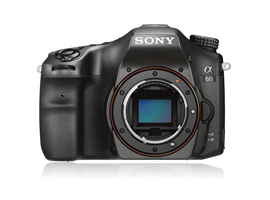



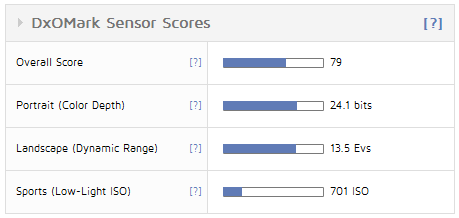
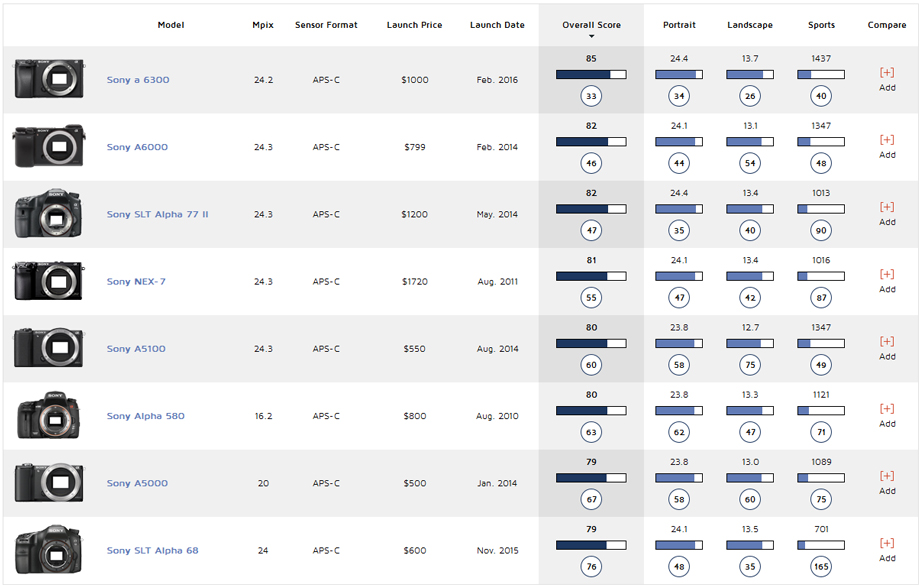
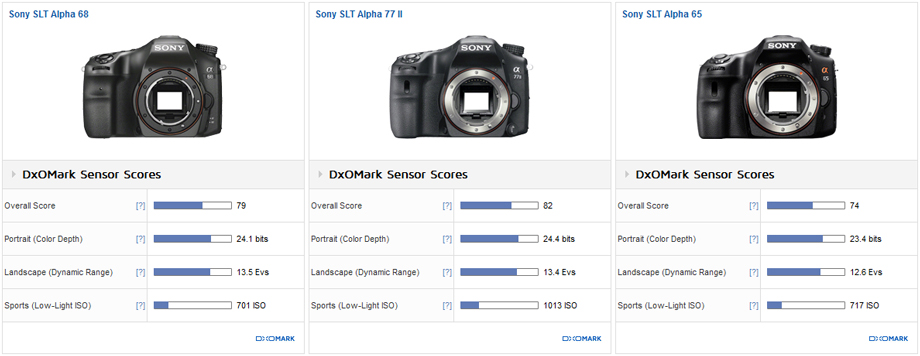
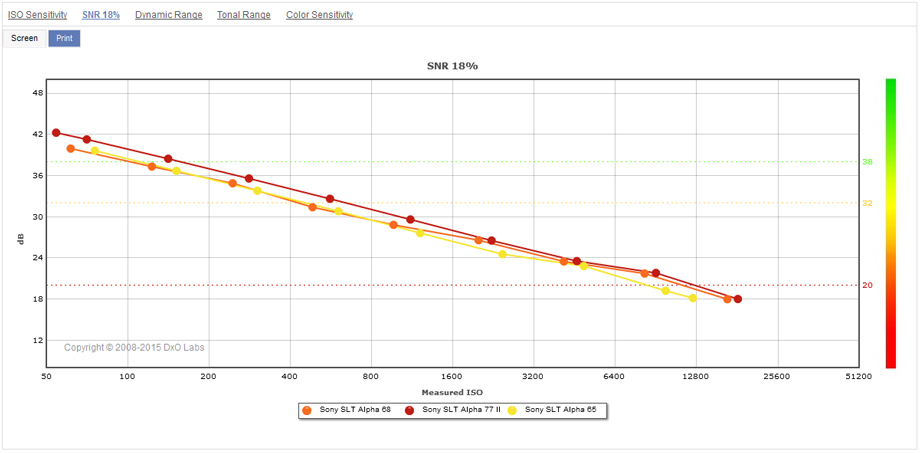
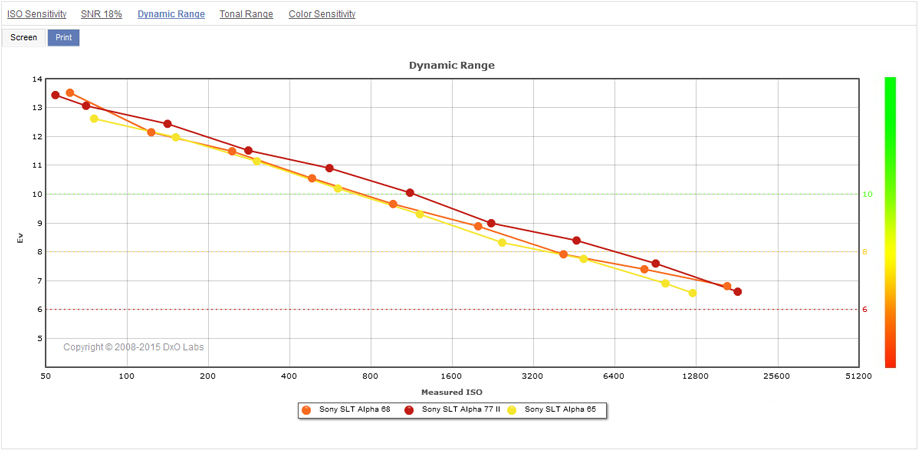
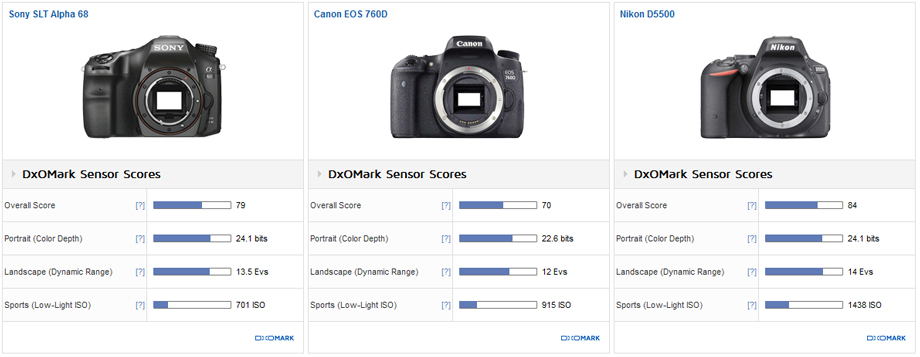
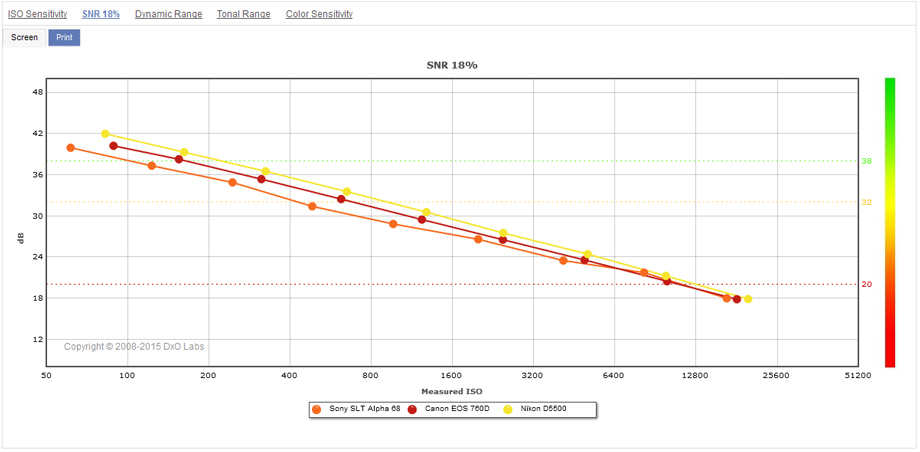
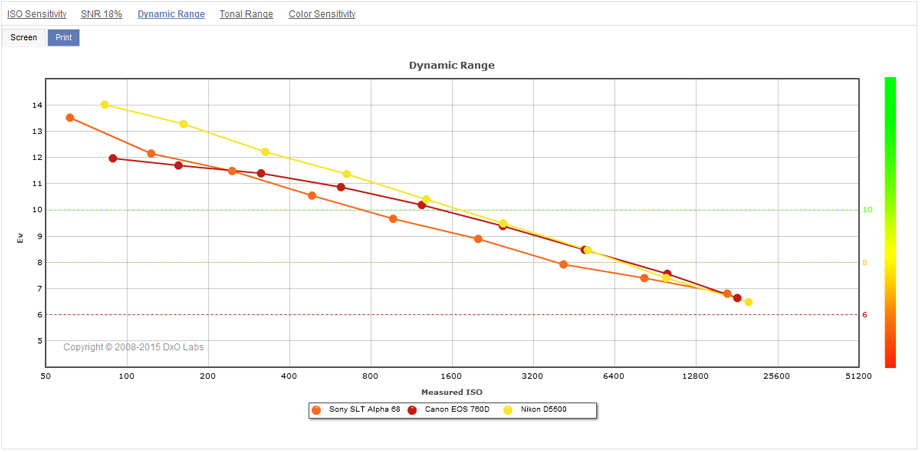
DXOMARK encourages its readers to share comments on the articles. To read or post comments, Disqus cookies are required. Change your Cookies Preferences and read more about our Comment Policy.